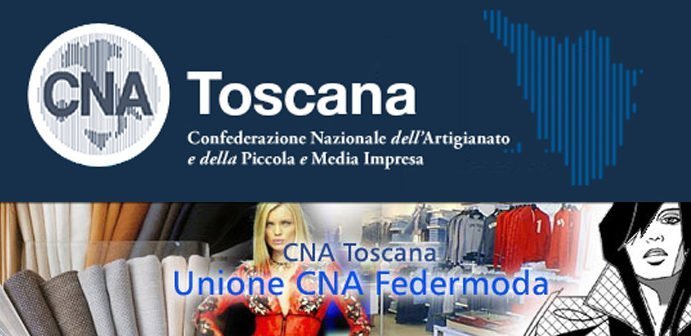
Dietro alle maggiori griffe lavorano aziende lontane dai riflettori, ma determinanti per la produzione e spesso ideazione dei capi e accessori firmati. Bruno Tommassini – attivista, imprenditore, stilista, presidente di CNA Federmoda Toscana, l’associazione di categoria, rappresentanza e promozione delle PMI del sistema moda regionale – rivela il suo punto di vista sulla necessità, per il made in Italy, di guardare avanti e proseguire nell’opera intrapresa.

Bruno Tommassini, presidente di CNA Federmoda Toscana. Lo stilista di Bottega Veneta è tra i fondatori dell’Arcigay e contitolare dell’azienda vinicola Prodigio. Bruno Tommasini, President of CNA Federmoda Toscana. Bottega Veneta’s designer is also one of the founders of the Arcigay association and a co-owner of the Prodigio winery.
Bruno Tommassini, esiste un filo conduttore che accomuna i diversi ruoli e responsabilità assunti nell’esercizio delle sue molteplici occupazioni?
Il filo conduttore è la libertà. Libertà di espressione, libertà di creare, libertà di amare, libertà di essere ognuno diverso dall’altro, ma uguale al tempo stesso. L’artigianato in fondo cos’è? Il saper fare qualcosa di unico che al tempo stesso diventa un patrimonio collettivo, qualcosa di inimitabile proprio perché riconoscibile.
Nel coordinare le attività di un settore fondamentale per l’economia della regione, e non solo, come quello dell’abbigliamento e accessori moda, quale ritiene debba essere oggi il suo personale dovere verso il futuro?
Sembrerà banale, ma credere nel futuro è l’unico modo per non rimanere sepolti nel passato. Un passato di cui andiamo fieri, che ha posto le basi per garantire alla Toscana e all’Italia il proprio ruolo nel mondo, ma anche un passato che da solo non basta. Se lo stile avesse ragionato come molti fanno oggi (“Si stava meglio quando si stava peggio”), non saremmo stati capaci di immaginare le cose che rendono il made in Italy unico al mondo. La nostalgia di un grande ieri non ci darà mai la fantasia di un nuovo domani.
Per la pelletteria e la moda di lusso i distretti italiani della manifattura rappresentano ancora delle risorse preziose? Esiste davvero un potere e un valore del made in Italy?
Certo, ma solo se sapranno evolversi come i prodotti migliori che hanno ideato e realizzato. La staticità non è nella natura stessa di chi immagina ogni giorno il domani. I distretti sono un patrimonio unico, e proprio per questo devono uscire dalla sindrome da museo: non stanno lì per farsi ammirare, ma per dirci dove andare. La strada è chiara, ma mancano molte tappe per poter dire che abbiamo trovato la porta verso il futuro.
La moda è lo specchio della società. Quali valori deve oggi saper trasmettere l’accessorio per rimanere al passo coi tempi?
Eccentricità, unicità, anticonformismo. Non deve essere la norma, il canone. Al contrario l’accessorio deve avere il coraggio di aprire dei varchi nella cultura di massa del gusto e delle griffe. Deve parlare una lingua diversa da tutte, deve essere un passo oltre i tempi. Non al passo. Più che lo specchio della società, direi che la moda è il termometro di quanto una società sia creativa piuttosto che statica, cerchi se stessa nel nuovo anziché rivedersi in qualcosa che ha fatto il proprio tempo.
Quanto incide il capitale umano nel successo competitivo di un’azienda?
Non incide, ne determina il successo o il fallimento. Capitale umano significa intelligenza, creatività, unicità, diversità. Perché tutto questo sia capace però di fare prodotto, e quindi business, serve qualcuno che sappia mescolare tradizione e novità. Non parlo solo del prodotto finito, ma anche delle logiche aziendali, che in Italia si giocano tutto sulla grande sfida dello streaming sul mercato globale, mantenendo la concorrenza con i grandi avversari, e quel surplus di qualità e unicità che rendono diversi. Direi che se vinciamo, e vinceremo, possiamo parlare di capitale sovrumano! Made in Italy: allora significherà davvero evolversi in perfetto stile.
Un numero crescente di imprese italiane di abbigliamento e accessori che avevano delocalizzato in paesi dal costo del lavoro ridotto stanno riportando l’intera produzione sul mercato domestico. Quali sono a suo avviso le motivazioni o le dinamiche competitive alla base di questo fenomeno di back-reshoring?
Due fattori insieme: da una parte la corsa all’oro di chi ha pensato che la dimensione locale fosse superata grazie a internet e al mondo più veloce dove tutti credono di sapere tutto. Dall’altra una contraddizione italiana che è anche un punto di forza: avere immaginato che la storia del nostro grande Paese per caso fosse una palla al piede e non la ragione per cui proprio noi, con tutte le nostre polemiche, scontri e risse, siamo diventati unici al mondo, invidiati ma difficilmente sconfitti.
Quali sono le politiche industriali che potrebbero favorire ulteriori rientri di asset produttivi e organizzativi in Italia?
Defiscalizzazione per chi produce cose nuove per nuovi mercati. Non redditi a chi non lavora, bensì un aiuto concreto a chi creerebbe nuovo lavoro ma è terrorizzato dall’instabilità decisionale, dalle montagne russe fiscali, dal rebus giuridico che rende i processi inutili.
L’avvento dell’industria 4.0 con le sue tecnologie digitali ha ridotto notevolmente lo svantaggio competitivo finora subito dai paesi occidentali nei confronti della manodopera estera a basso costo, favorendo al tempo stesso l’efficienza del processo produttivo. Come mai la maggior parte delle imprese del settore sono ancora impreparate di fronte alla nuova sfida della digitalizzazione? Quali sono le difficoltà a introdurre percorsi innovativi all’interno di una produzione di matrice tradizionale come quella pellettiera in particolare e della moda in generale?
Chi non ha denti ha pane e viceversa. Ridurre le distanze è fondamentale, consentendo di arrivare nello Spazio se ci sarà un cliente potenziale su qualche pianeta, ma se poi non vengono forniti gli strumenti per atterrare nella nuova atmosfera, anche i piloti più esperti finirebbero per schiantarsi. Inutile avere la Ferrari se mancano le strade. www.cnatoscana.it
CNA FEDERMODA TOSCANA, LET’S DEFINE THE WAY FORWARD
Behind prominent fashion brands, there are companies working out of the spotlight, that play a pivotal role in the production and, often, in the design of high-end garments and accessories. Bruno Tommasini – activist, entrepreneur, fashion stylist, president of CNA Federmonda Toscana, that is, the trade association that represents and promotes SMEs operating in the regional fashion system – explained his perspective on the need, for Italian manufacturing, to look ahead, heading down the chosen path.
Bruno Tommasini, is there a common thread shared by the several roles and responsibilities taken on in the execution of your multiple duties?
The leitmotif is freedom. Freedom of expression, freedom to create, freedom to love, freedom to be yourself, to be different and alike at the same time. What is craftsmanship after all? It’s the ability to give life to something unique that becomes part of the collective heritage as well, something exclusive and highly recognizable.
While coordinating the activities of a strategic sector for the economy on a regional and national level such as the apparel and fashion accessories one, what is your personal duty towards the future?
It may seem trivial, but to believe in the future is the only way to not be buried by the past. A past of which we are truly proud, that has laid the foundations in order to guarantee to Tuscany and Italy their prominent role in the world, and yet that alone is not enough. If style had reasoned like many do today (“It was better when it was worse”), we wouldn’t have been able to come up with the things that have turned “made in Italy” into a unique label worldwide. The nostalgia for the past will never result in the creativity of the future.
As far as luxury fashion and leatherware are concerned, are the Italian manufacturing districts still a valuable resource? Is there really a power and a value related to “made in Italy”?
Of course, but only if they manage to evolve just like the best products they have designed and manufactured. Those who enjoy envisioning the future on a daily basis, foster a dynamic attitude. Districts and clusters are a strategic part of our heritage and, for this reason, they should not be kept under a bell jar: they are not mere objects to be admired, but they should point out which course to take. The path is clear, but there is still work to do in order to find the right gateway to the future.
Fashion is a reflection of society. What kind of values do accessories have to convey in order to keep up with the times?
Originality, distinctiveness, non-conformism. It should not comply with rules. On the contrary, the accessory must be bold enough to gain a foothold in the mass culture of taste and of fashion houses. It should speak an entirely different language, be a step ahead of times. Not at par. Rather than its reflection, I would say that fashion is the gauge of society’s attitude, static or dynamic, highlighting if it focuses too much on the past or if it embraces the future.
What is the role played by the human capital when it comes to the corporate competitive success?
Pivotal, it actively contributes to its success or failure. Human capital means intelligence, creativity, uniqueness, diversity. However, in order to increase business and make quality articles, there should be someone able to combine tradition and innovation. Not only in terms of end product, but also when it comes to corporate strategies – in Italy, this leads to the streaming challenge on the global market, keeping up the pace with prominent competitors as well as ensuring first-rate quality standards and exclusivity. In my opinion, if we win, and this will definitely happen, we can even call it a superhuman capital! Made in Italy: in that case, it will really mean evolving in perfect style.
A growing number of Italian apparel and accessories firms that had relocated to countries with lower labour costs, are now bringing the entire production back to the domestic market. In your opinion, what are the reasons and the competitive dynamics at the core of this back-reshoring trend?
Two factors: on the one hand, the gold rush supported by those who thought that the local scope was outdone by the Internet and other technologies, in a fast-paced world where everybody is convinced to know everything. On the other, an Italian contradiction that is also a strength, that is, the idea that the history of our glorious Nation could be considered a nuisance and not the reason behind our uniqueness and success, despite all difficulties and controversies.
What are the industrial policies that might favour the reshoring to Italy of more production and organization assets?
Tax exemption for companies producing innovative articles for new markets. Not resources for the unemployed, but rather concrete support to those who would like to provide job opportunities, but are too scared by decision-making instability, by the financial burden and by the red tape.
Industry 4.0 and its digital technologies have markedly reduced the competitive gap between western countries and low-cost foreign manpower, while improving the efficiency of the production processes. Why is the majority of the trade enterprises still unprepared for the digitalization challenge? What are the difficulties met when it comes to the implementation of innovative solutions in highly traditional sectors such as the leatherware and fashion ones?
Those who have the means don’t have the know-how and vice versa. It is deemed imperative to reduce distances, thus allowing to reach even Space and any potential customer out there: however, if you do not provide suitable tools to land safely, even the most experienced pilots will end up crashing. A Ferrari is useless when there are no roads. www.cnatoscana.it
